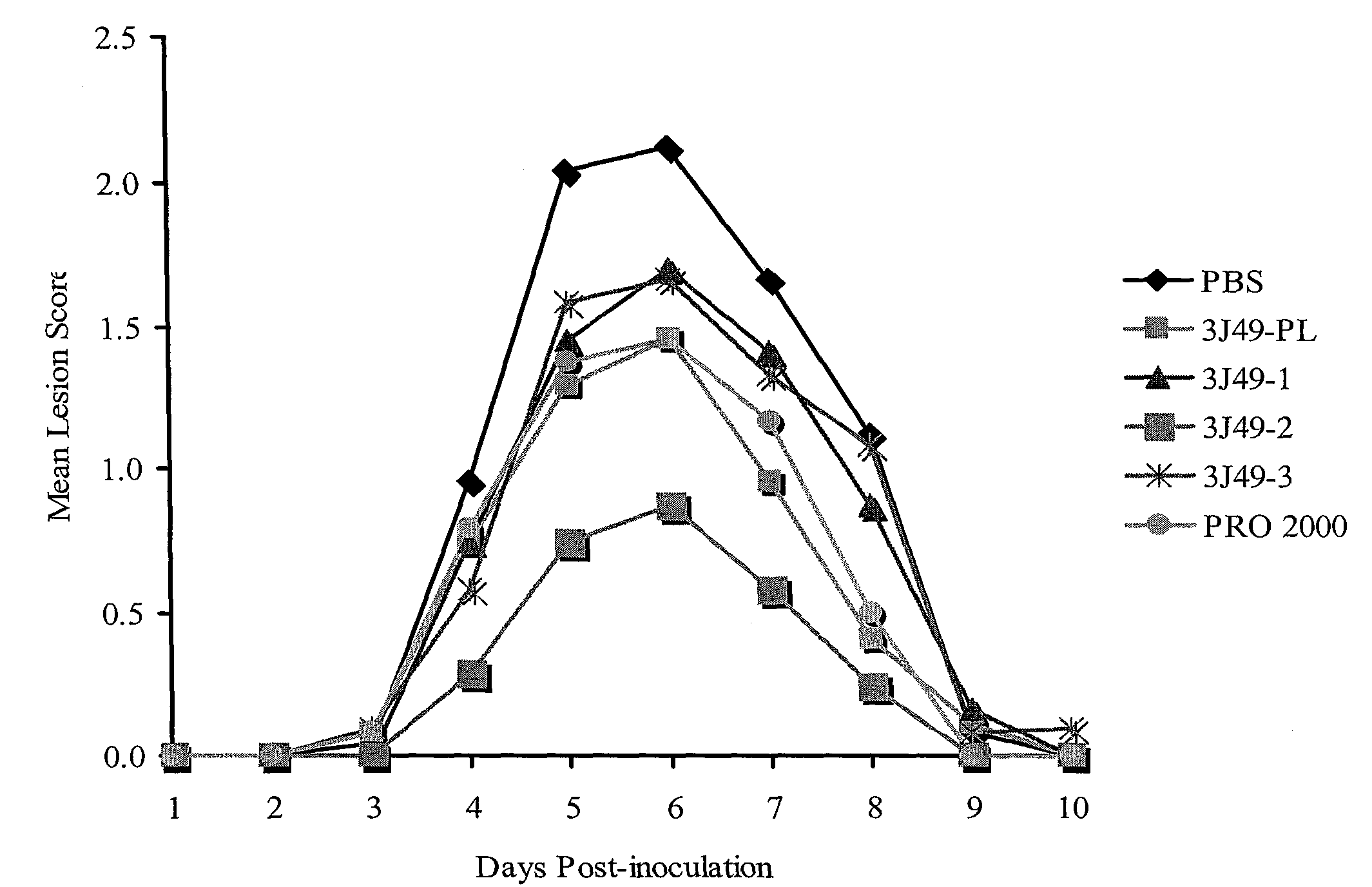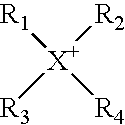Virus-, Bacteria-, and Fungi-Interacting Layered Phyllosilicates and Methods of Use
a technology of phyllosilicate and layered phyllosilicate, which is applied in the field of layered phyllosilicate, can solve the problems of severe, indeed fatal, infected, infants, elderly, or debilitated patients, and continue to cause global problems, and achieve the effect of preventing infection
- Summary
- Abstract
- Description
- Claims
- Application Information
AI Technical Summary
Benefits of technology
Problems solved by technology
Method used
Image
Examples
example 1
[0192]Example 1 demonstrates the ion exchange process of smectite clay from a Ca form or Na / Ca mixed forms to Na-rich smectite clay.
[0193]Raw smectite clay was dispersed into water to make a 3 wt % clay slurry. This clay has a Na content of 0.20 wt % and Ca content of 2.10 wt %. The elemental analysis was measured by an X-ray fluorescence method. The mixture was mixed thoroughly with a mechanical mixer. The pH value of the starting clay slurry is 7-8. An ion exchange resin, such as Amberlite 200C Na, is available from Rohm & Hass packed in a glass column with a 2-in diameter and a 20-in length. A liquid pump was used to pump the clay slurry through the column at 20 ml / min. Elemental analysis of the finished clay, dried from the slurry, indicated that the Na content is 3.45 wt % and Ca content is 0.17 wt %. The ion exchanged clay is called El-Na-Clay. This clay had a basal spacing of 13 Å.
example 1a
[0194]Example 1A demonstrates the ion exchange process of smectite clay from the purified sodium form produced in Example 1 to a hydrogen protonated clay.
[0195]Purified sodium montmorillonite was dispersed into filtered deionized water to make a 3 wt % clay slurry. The clay slurry was mixed thoroughly with a Silverson homogenizer. The pH value of the starting montmorillonite slurry was about 10. A proton ion exchange resin, Amberlite FPC23 H (Rohm & Hass), was packed into two glass columns with a 2-in diameter and a 20-in length; one inch of space was left at the top of each column to promote flowability of the beads. The purified sodium montmorillonite clay slurry was slowly mixed using a 3-inch dispersion blade while a liquid pump was used to pump the montmorillonite clay slurry through two proton exchange resin packed columns at 20 ml / min. The pH of the resulting protonated clay slurry was 2.3 after passing through the second column. Analytical results indicate complete proton ex...
example 2
[0196]Example 2 demonstrates the formation of protonated Octadecyl ammonium-treated smectite clay with Octadecyl ammonium acetate from the ion exchanged Na-smectite clay (E1-Na-clay) of Example 1.
[0197]100-g of sodium smectite clay El-Na-clay was dispersed into 3000 ml water through a mechanical mixer. This clay slurry was heated to 80° C. 41.5 g of Octadecyl ammonium acetate from KAO Chemicals was added into the clay slurry. The clay showed excellent flocculation after the addition of the Octadecyl ammonium acetate. The pH of the clay reaction slurry was about 4. The clay was filtered with regular quantitative filter paper with the assistance of a mechanical vacuum pump. Then, the clay was dried in an oven over night at 80° C. and ground to pass through a 300-mesh screen as a fine powder. This modified clay was called E2-ODA-Clay.
PUM
 Login to View More
Login to View More Abstract
Description
Claims
Application Information
 Login to View More
Login to View More - R&D
- Intellectual Property
- Life Sciences
- Materials
- Tech Scout
- Unparalleled Data Quality
- Higher Quality Content
- 60% Fewer Hallucinations
Browse by: Latest US Patents, China's latest patents, Technical Efficacy Thesaurus, Application Domain, Technology Topic, Popular Technical Reports.
© 2025 PatSnap. All rights reserved.Legal|Privacy policy|Modern Slavery Act Transparency Statement|Sitemap|About US| Contact US: help@patsnap.com



